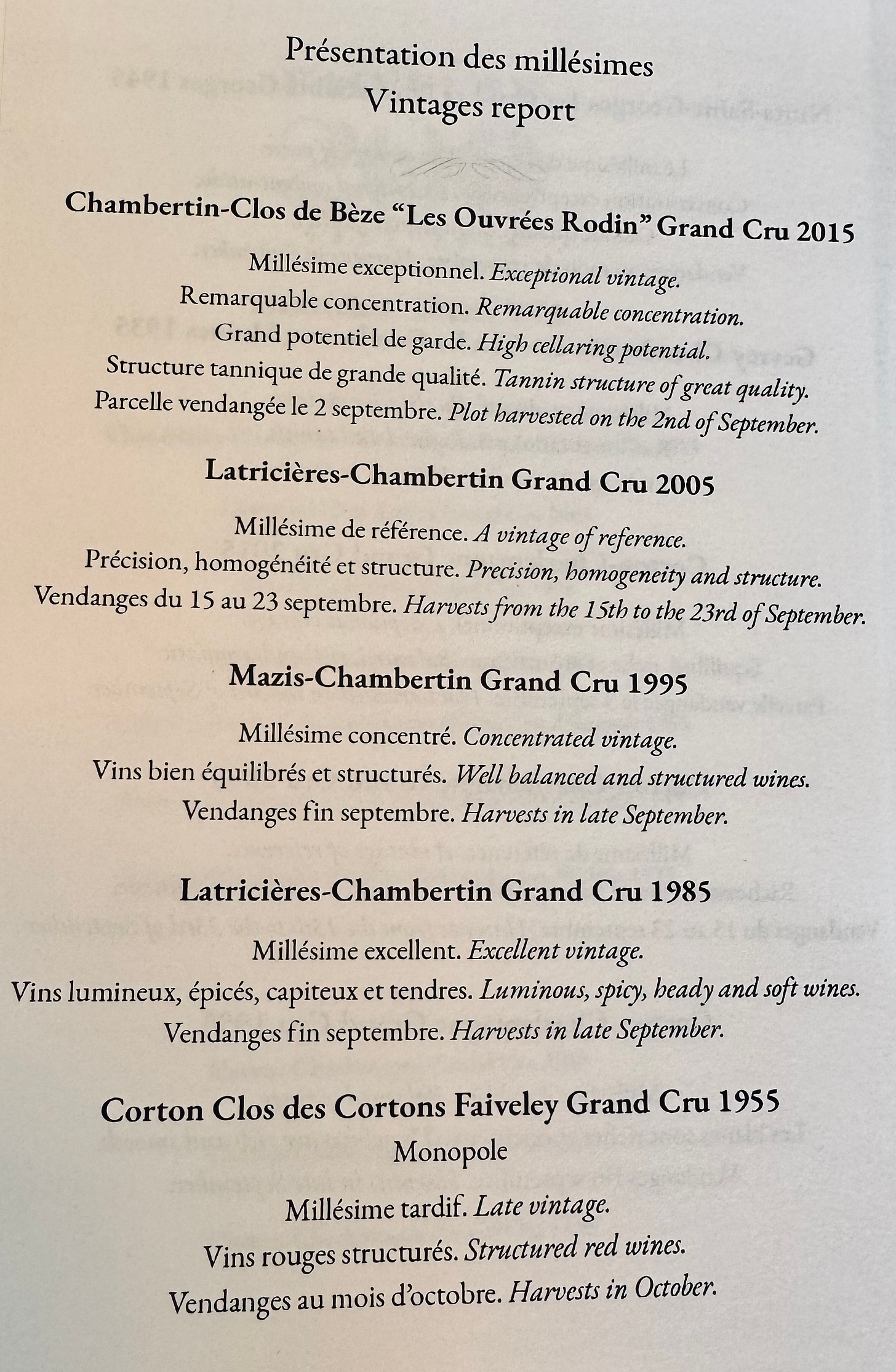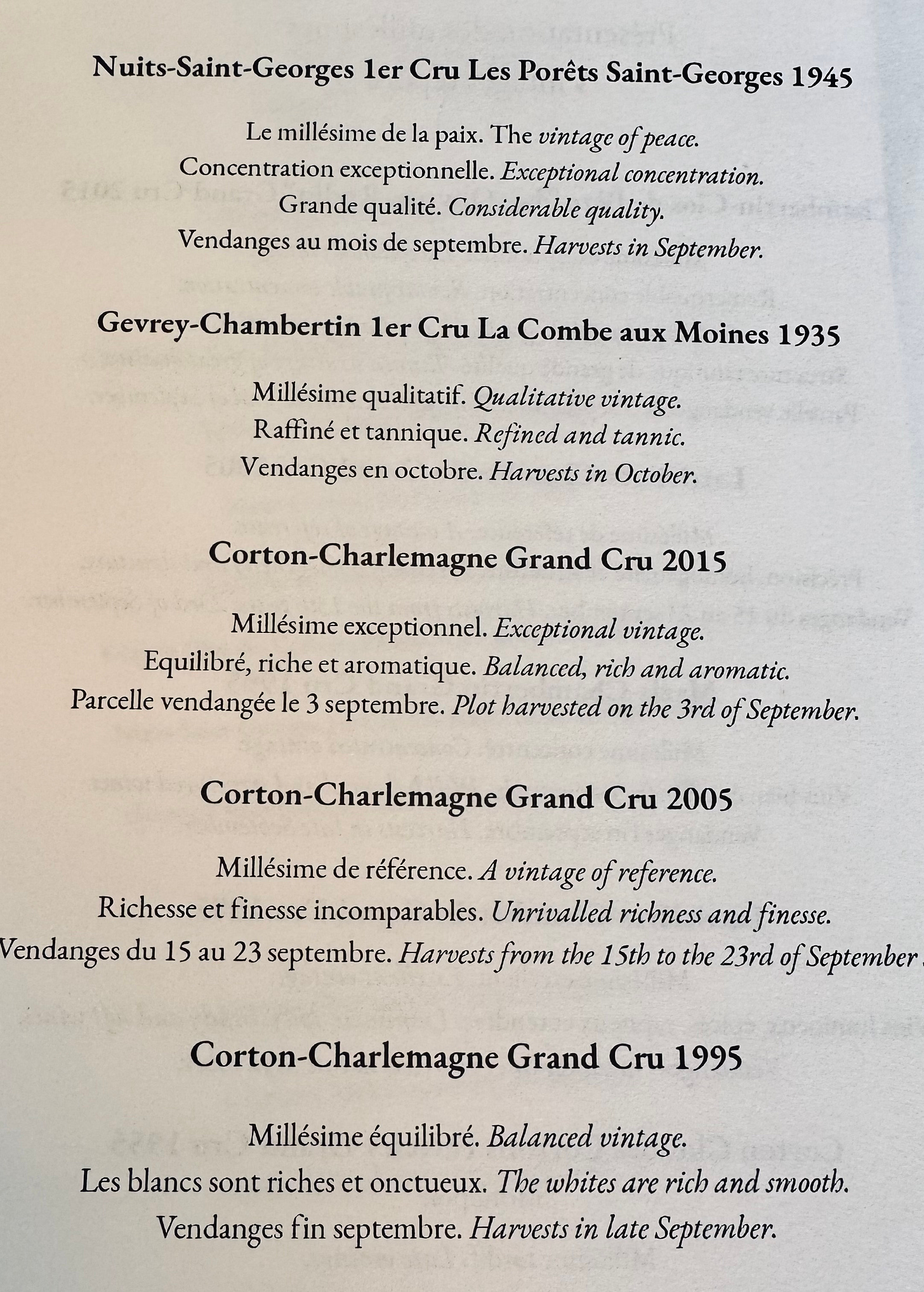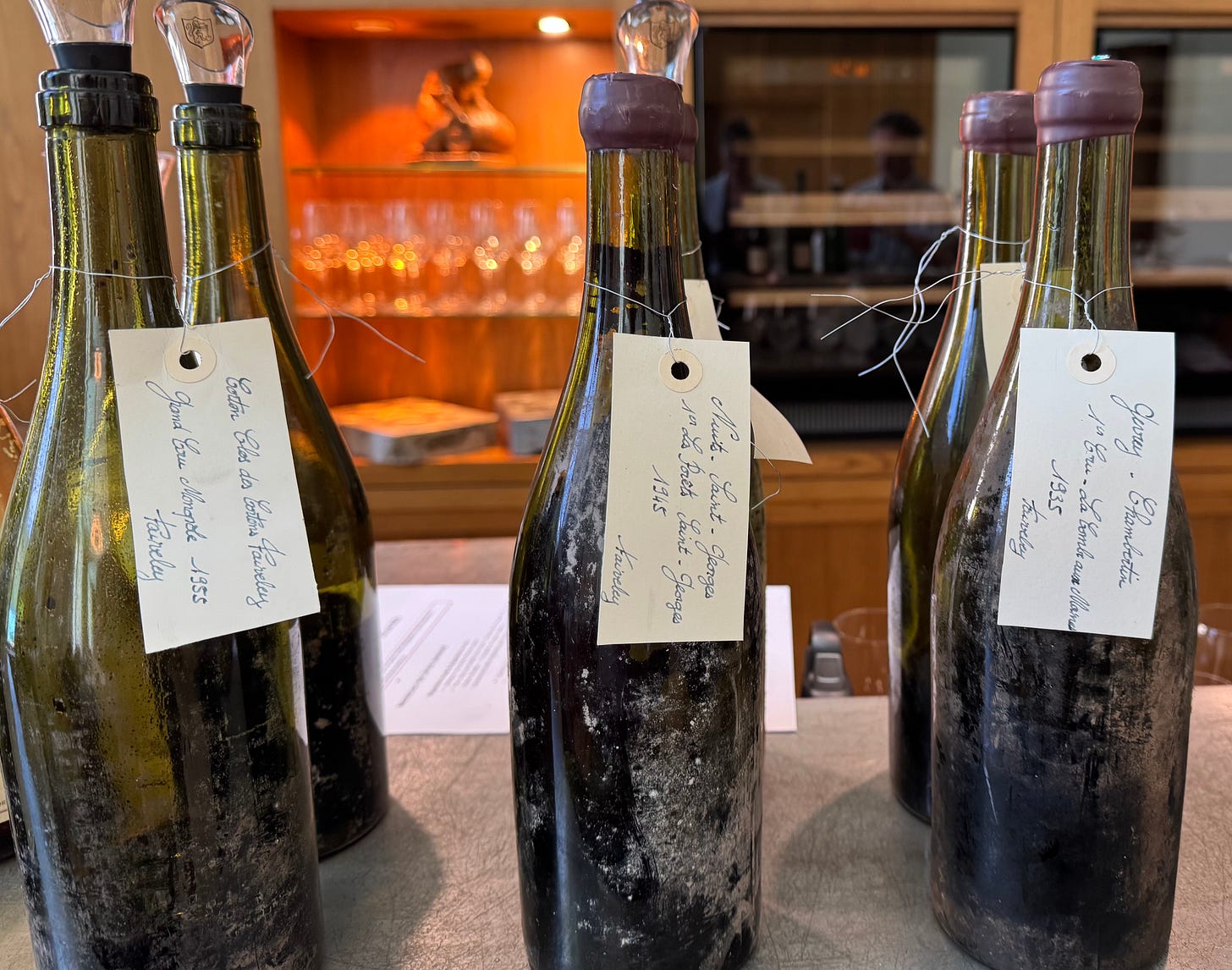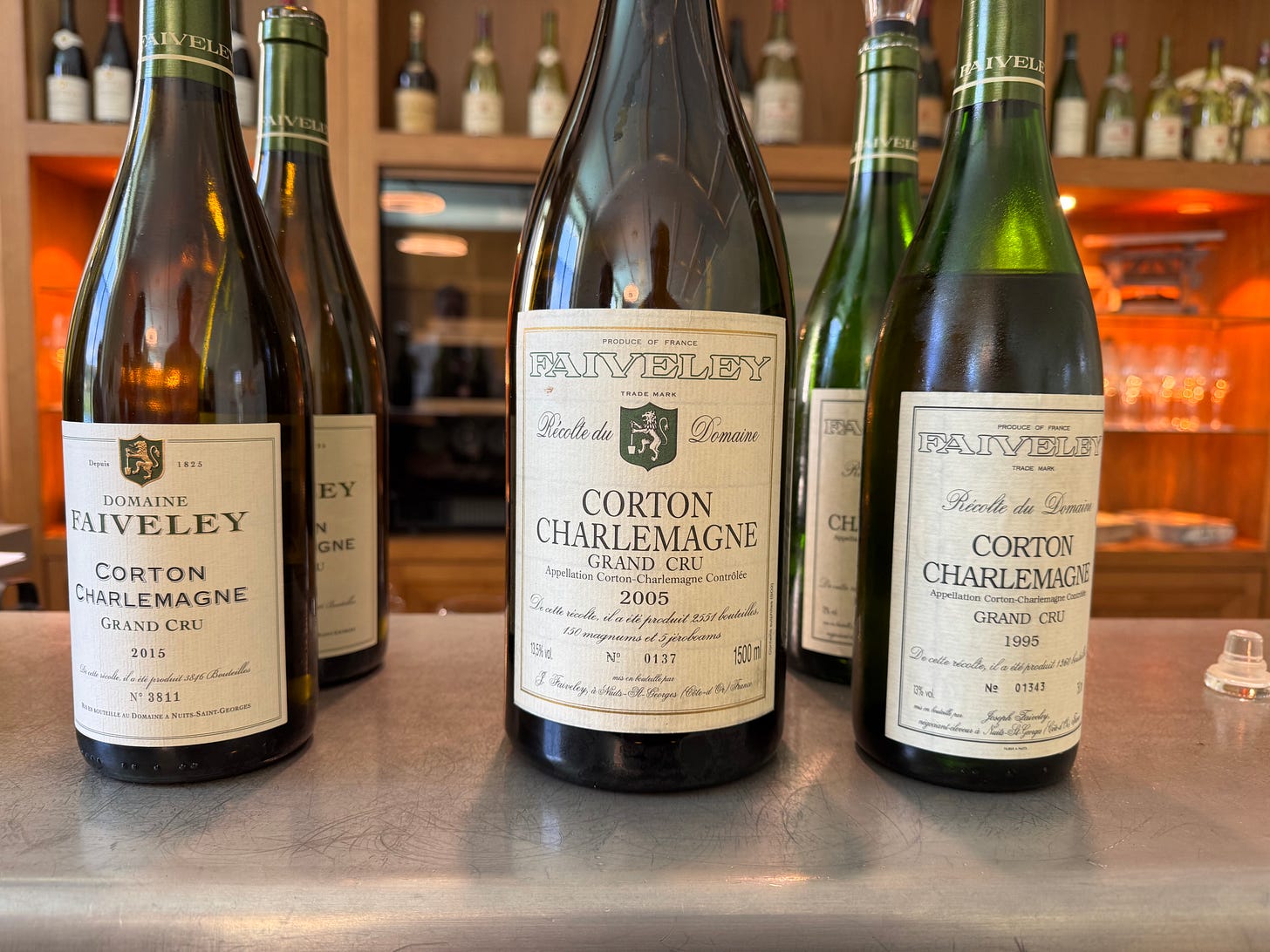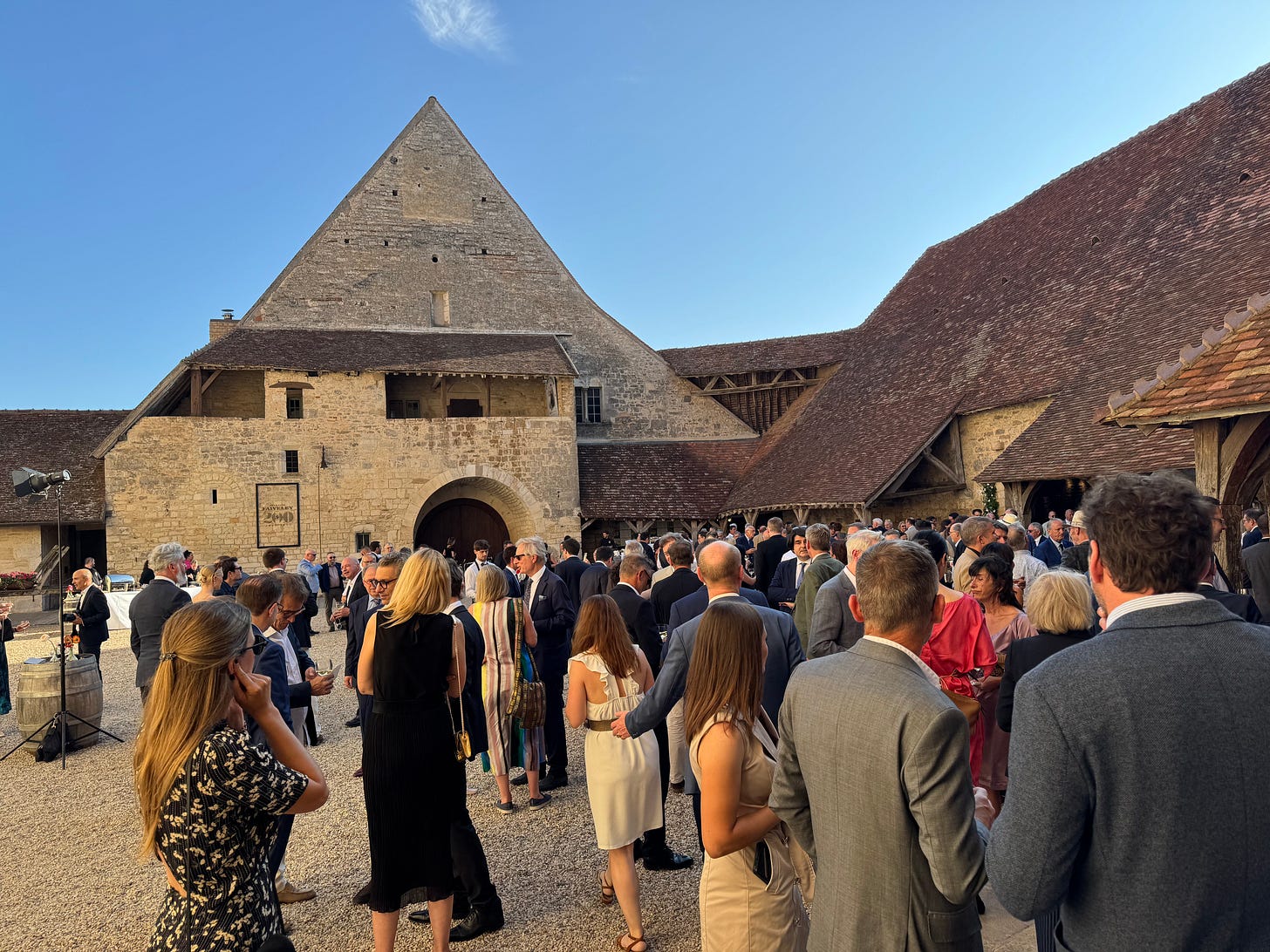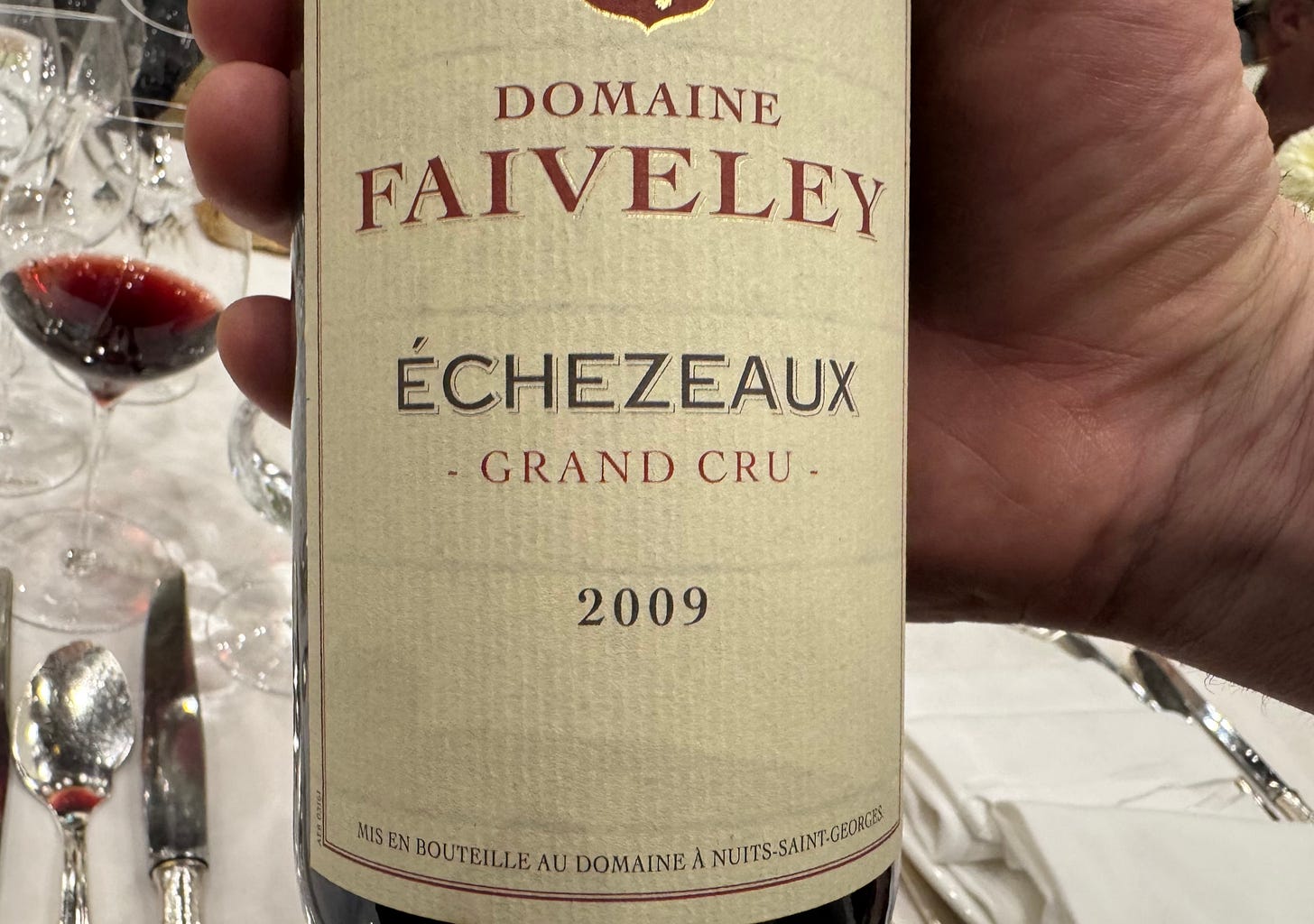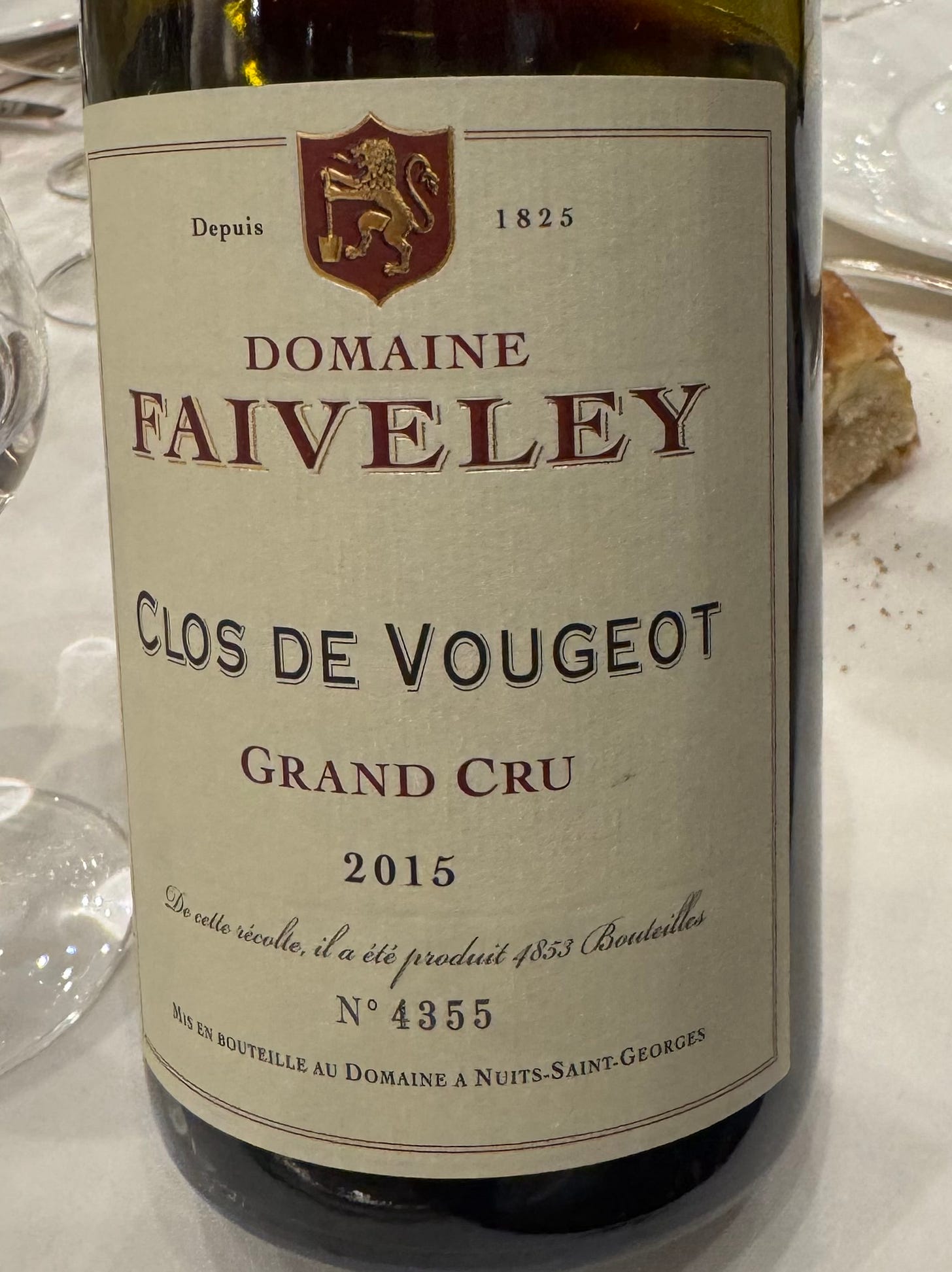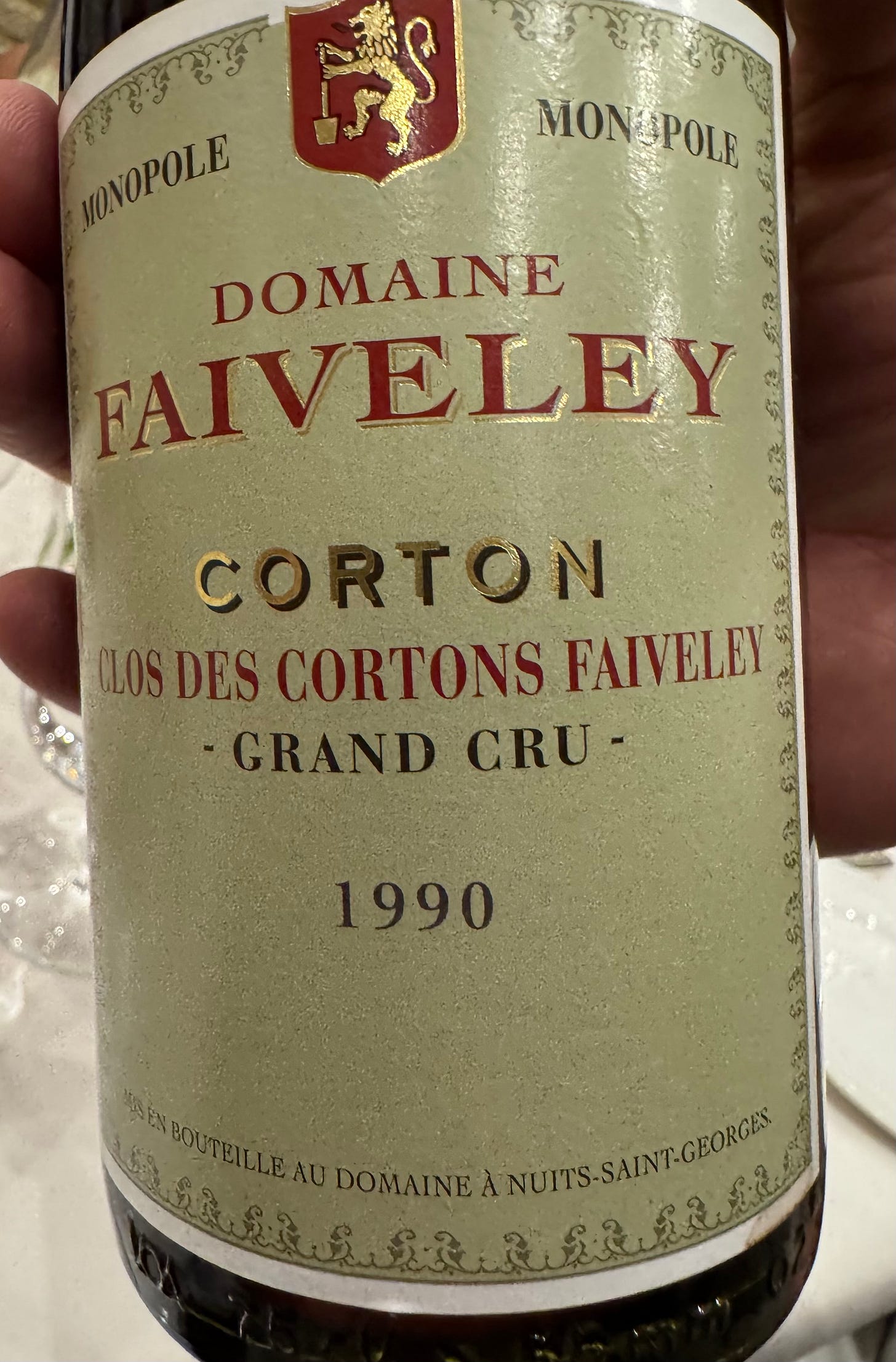In 1825, Pierre Faiveley, a plasterer in Burgundy, decided to supplement his income by opening a wine trading business. Thus begins the history of Domaine Faiveley, which celebrated its 200th birthday a few weeks ago.
At first, Faiveley sold only barrels of wine. Erwan Faiveley, who along with his sister Ève, now heads up the seventh generation of the family at the business, believes that the firm began to bottle in 1860s or 1870s, but the oldest bottle that he has found is 1898.
By 1834, Faiveley bought its first vineyard — 1.5 ha of Porêts-Georges in Nuits (as Nuits-Saint-Georges was then known). But until rather late in the 20th century, Faiveley, like other firms known as négociants, sold the majority of its wine from purchased lots and then later also from purchased grapes that it vinified. That has changed. Faiveley now owns 120 ha. in Burgundy; 30 ha are in the Côte de Nuits, and roughly 80 ha. of the overall holdings are in the Côte Chalonnaise.
In recent decades, Faiveley has expanded into the Côte de Beaune, and in particular whites from there, with the purchase of Domaines Monnot and Anne Parent. More recently, Faiveley purchased Domaine Billaud-Simon in Chablis (which still operates under that name), and at the beginning of June, Faiveley announced that it had purchased a majority interest in Williams-Selyem, Pinot Noir specialists in California’s Russian River Valley (Faiveley initially purchased a minority interest four years ago).
François Faiveley took over from his father Guy in 1976. In 2005, François turned the operations over to his son Erwan, eventually joined by his sister Ève in 2014. In 2007, Erwan hired Jérôme Flous as technical director, a post he still retains. Under Erwan and Jérôme the wines have changed to become more approachable in their youth, yet they still retain their ability for substantial aging.
This tasting consisted of Faiveley wines from years ending in 5 back to 1935 (excepting 1965 and 1975, which were very poor vintages in Burgundy) for the reds and back to 1995 for whites (Faiveley was late to the white Burgundy game).
A list of the wines, followed by Faiveley’s notes on the vintages:
We start with the red wines:
2015 Chambertin-Clos de Bèze Les Ouvrées Rodin
Beginning in 2010, Faiveley separated out part of its Chambertin-Clos de Bèze holding to make this wine from very old vines (which may be ripped out later this year because of their age). Amazingly complex nose: earthy with dark fruits underneath, secondary stage. Full-bodied, smooth mouth enveloping, precise dark fruits, concentrated, intense, still good freshness. Lots of power, not much finesse. Erwan notes that it was a dry season with low yields, in some ways like 2005, but vinification had changed by 2015 to make the wines more approachable young. This was the last vintage in the older winery, still vinified in oak, cuvaison for about 12 days. 50% raised in new oak, 50% in 1 year-old barrels. 97/A+
2005 Latricières-Chambertin
Technically, this was Erwan’s first vintage, but he confesses that he didn’t know much about wine at the time. Vinified in the same style as in preceding vintages under François. This was the last lot picked during the harvest. Still some oak in the nose, pencil lead, with raspberry, strawberry underneath, with time some fennel, too; closes up with time. Still some tannin, but can drink now. Elegant. In 1920s, Faiveley bought Domaine de Grésigny, which is where got a large part of vineyards (part of the de Grésigny domaine was also sold to René Engel). Lighter on palate than the 2015 Clos de Bèze. Very thin, stony soil. Will still improve with several years. 94(+?)/A
1995 Mazis-Chambertin
Magnificent chipped stone nose. Dark fruits in the mouth and later some strawberries, powerful, some musk, still firm but tannins are not aggressive. Depth, excellent complexity. Erwan notes that this vintage marked a change in style under François: with warmer vintages, he started cool macerations. 96/A
1985 Latricières-Chambertin
Floral, mineral nose (some at the table where I was tasting find brettanomyces, but I don’t). A little sweetness on palate from the fruit. Still young for a 40-year wine, rich, round, light on palate. A second bottle is much more closed. Light, elegant, energetic on palate, savory, energetic, penetrating. Interestingly, Erwan says that today’s winemaking is similar to what Faiveley was doing back then. 97/A+
1955 Corton-Clos des Cortons Faiveley
Bought plot in 1874, under name Clos des Cortons. Airy, pure, saline, good density, elegant, sweetness from fruit. Long finish. Great freshness, would not think that this is a 70 year-old wine. 98/A+
1945 Nuits-Saint-Georges 1er Cru Les Porêts Saint-Georges
Sulfur was very difficult to get in 1945, so this may be an unsulphured wine. Rich, sweetness from the strawberry fruit, complex, long, good acidity; but with a little time, telltale brett band-aid comes out in nose. 95/A (based on the wine prior to the brett coming out)
1935 Gevrey-Chambertin 1er Cru La Combe aux Moînes
The only appellation from 1935 that Faiveley has in its cellar. From a bottle that was hidden from the Nazis in Northern Burgundy. Erwan notes that this vineyard was later replanted in the 1970s with inferior vegetal material, and so it took 40 years for the vines to yield outstanding results. Here, too, with time some band-aid comes out — before I can get any notes written. NR White wines:
White wines:
2015 Corton-Charlemagne
From plots just below Clos des Cortons Faiveley (and includes one plot in the Clos des Cortons Faiveley), four different plots. Picked and vinified in two different times. Honeysuckle; good grip, still, ripe, with some honey, richness. 50% new barrels, 50% one-year. 94(+)/A
2005 Corton-Charlemagne (magnum)
Round, medium-full, elegant, long, intense. The generosity here is the signature that this is a from the east-facing side. Nice bitterness on the finish. 100% new oak. 94(+?)/A
1995 Corton-Charlemagne
Previous two were very light in color, this is gold (see picture below); there may have been some botrytis in this wine. Older in mouth, but not without interest. Probably not the best bottle. ?
Later that evening, there was a reception followed by a grand dinner at the Clos-Vougeot.
I was unable to take notes on the splendid wines at the reception, but here are my notes on the wines served with the dinner:
2019 Latricières-Chambertin
Elegant, smooth, relaxed, not with the tension I usually associate with Latricières, but delicious red fruits. Quite ripe. 93/A-
2009 Échezeaux
Finesse, almost crystalline clarity, calm, elegant, long, and pure with freshness. This is a very fine Échezeaux. 95/A
2018 Corton-Charlemagne
Light in mouth, finesse, pure, fresh, some oiliness to the textrue. 94+/A
2008 Bâtard-Montrachet
Saline, rich, but also elegant, with white fruits. 96/A
2015 Clos-de-Vougeot
Round, smooth, intense, but lacking some of the precision in the other wines. At the dinner, Erwan Faiveley announced that the firm was giving part of its Clos-de-Vougeot holding to the Hospices de Beaune to form a Cuvée François Faiveley. 93/A-
2005 Mazis-Chambertin
Intense, deep, pure, concentrated dark fruits. Still quite young, but you can drink it now. 97/A+
2010 Chambertin-Clos de Bèze
Leafy nose from reduction, smooth, silky. Excellent now, but will still improe. 95+/A
1990 Corton Clos des Cortons Faiveley
Rich, young, layered, powerful. 1990 overall has never been a favorite vintage for me, but the top wines, of which this is one, are indeed special. 95+/A
And so concludes a marvelous day of tasting great wines from one of Burgundy’s top producers.





